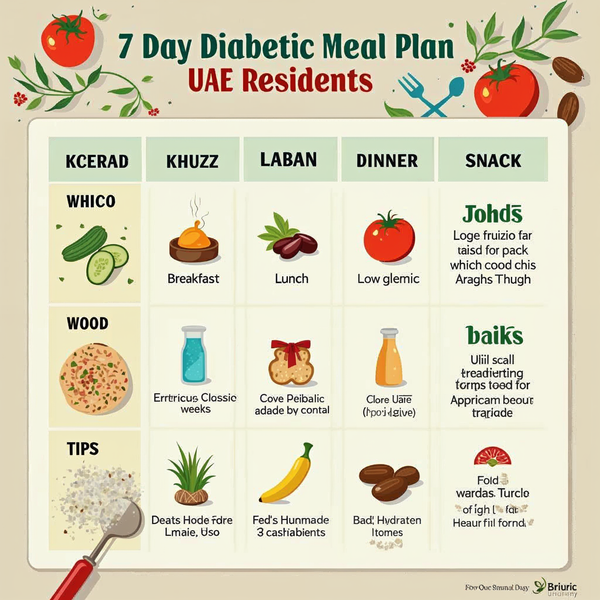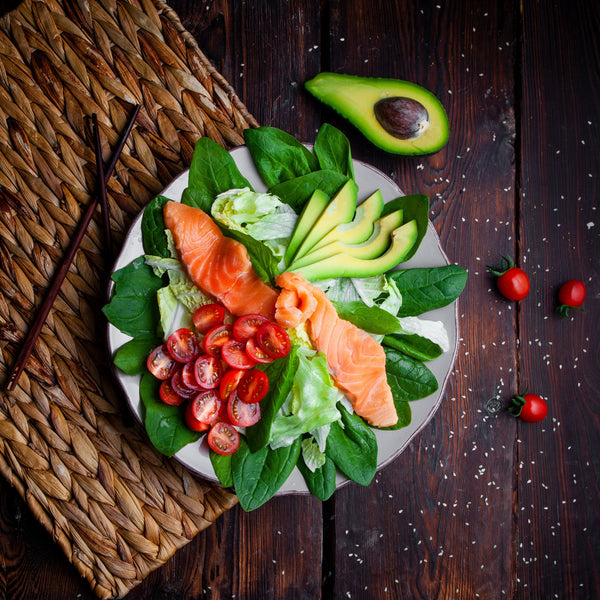Plant-Based Meal Plans: A Beginner's Guide
by Sarath Veettil

Eating a plant-based diet is gaining momentum, as more people realize its health benefits, including improved heart health, weight loss, and protection against chronic diseases. As we strive for better nutrition and sustainability, more individuals are transitioning to plant-based eating patterns. Whether you’re considering a vegan diet, vegetarian diet, or just looking to incorporate more plant-based meals into your lifestyle, this guide will help you get started on your plant-based journey.
What is a Plant-Based Diet?
A plant-based diet primarily consists of plant foods, such as fruits, vegetables, whole grains, legumes, nuts, and seeds, while minimizing or excluding animal products. It doesn't necessarily mean going vegan or vegetarian—a flexible approach is often called a flexitarian diet. People who follow this pattern might occasionally include small amounts of animal foods like eggs or dairy products. Some people prefer a stricter vegan diet, avoiding all animal products, while others may choose a more moderate approach, similar to the Mediterranean diet, which emphasizes plant-based foods alongside small amounts of fish and dairy.
The benefits of a plant-based diet go beyond personal health. For instance, reducing the consumption of animal products can have a significant impact on reducing environmental strain, promoting sustainability, and supporting animal welfare.
Health Benefits of a Plant-Based Diet
Health benefits of adopting a plant-based diet are numerous. Research has shown that consuming more plant-based foods is associated with a reduced risk of several chronic conditions, such as heart disease, diabetes, and even some cancers.
- Heart Health: Plant-based diets have been shown to lower cholesterol levels and reduce the risk of coronary heart disease. With reduced intake of saturated fat found in animal products, individuals often experience improved heart health.
- Weight Loss: A plant-based diet, rich in fiber and low in calories, can help with weight management. The high fiber content in plant foods helps you feel fuller for longer, making it easier to control portions and reduce overeating.
- Nutrient-Rich: Many plant foods are packed with essential vitamins, minerals, and antioxidants, including those that support a healthy immune system and reduce inflammation. Nutrients like omega-3 fatty acids, iron, and vitamin B12 are found in a variety of plant-based sources.
- Disease Prevention: By avoiding processed foods and focusing on whole, nutrient-dense foods, you can reduce the risk of conditions like type 2 diabetes and obesity. For example, whole grains and legumes offer complex carbohydrates that stabilize blood sugar levels, lowering the risk of diabetes.
Essential Nutrients in a Plant-Based Diet
One of the concerns for those starting a vegan diet or vegetarian diet is ensuring they get adequate nutrients. While plant-based diets are rich in many vitamins and minerals, some nutrients, like vitamin B12, need extra attention. Here’s a breakdown of key nutrients:
- Protein: Contrary to the myth that vegan diets lack protein, there are plenty of plant-based protein foods available. Sources like lentils, beans, tofu, tempeh, quinoa, and nuts provide all the essential amino acids your body needs.
- Vitamin B12: Vitamin B12 is primarily found in animal products, so it’s crucial for those following a vegan diet to consume fortified foods (like plant milks, cereals, and nutritional yeast) or consider supplementation.
- Omega-3 Fatty Acids: These essential fats, important for heart health and brain function, can be found in flaxseeds, chia seeds, walnuts, and hemp seeds.
- Iron: Iron from plant-based sources like spinach, beans, and lentils is non-heme iron, which is less readily absorbed by the body. To enhance absorption, pair iron-rich foods with those high in vitamin C, like citrus fruits or bell peppers.
- Calcium: People who avoid dairy products can turn to fortified plant milks, leafy greens, or tofu to ensure they meet their calcium needs. This is crucial for bone health.
Tips for Transitioning to a Plant-Based Diet
Making the switch to a plant-based lifestyle can be daunting, but taking it one step at a time will make the process smoother. Here are some tips to help you get started:
- Start Slow: Don’t feel pressured to switch overnight. Begin by incorporating more plant-based meals into your routine. Try having a vegetarian diet for a few days a week before moving to a full vegan diet.
- Experiment with Recipes: Embrace the variety of plant-based cuisines. Whether you're exploring Mediterranean, Asian, or Mexican cuisines, plant-based meals can be flavorful and diverse. Use nutritional yeast to add a cheesy flavor to dishes and experiment with plant-based milks like almond or oat milk.
- Plan Ahead: Meal prepping is a great way to stay on track. Prepare simple dishes like quinoa, lentils, or salads ahead of time to have nutritious meals ready when you're short on time.
- Replace Meat: There are plenty of plant-based alternatives to meat, such as tempeh or tofu. Experiment with different proteins until you find what works for you.
- Focus on Whole Foods: Prioritize whole, unprocessed plant foods rather than processed snacks. Whole grains, beans, vegetables, and fruits should form the foundation of your meals.
Plant-Based Meal Planning for Beginners
The key to maintaining a plant-based diet is ensuring your meals are balanced and satisfying. Here’s a simple sample meal plan for the day:
- Breakfast: Oatmeal made with almond milk, topped with chia seeds, nuts, and fresh berries.
- Lunch: Quinoa and black bean salad with avocado, diced tomatoes, and a lime dressing.
- Dinner: A hearty lentil stew served with steamed vegetables and brown rice.
- Snacks: Hummus with carrots, or a handful of almonds and dried fruit.
When planning meals for weight loss, focus on low-calorie density foods like vegetables and legumes that are high in fiber and nutrients. Pairing a vegan diet with portion control and exercise can yield positive results.
Common Mistakes to Avoid on a Plant-Based Diet
While a plant-based diet is nutritious, some common mistakes can undermine its effectiveness:
- Over-relying on Processed Foods: Not all plant-based foods are healthy. Avoid too many processed options, like packaged vegan snacks, which may be high in saturated fat and sodium.
- Ignoring Nutritional Needs: It’s important to track your nutrient intake, especially for vitamin B12, omega-3 fatty acids, and iron. Regularly include fortified foods or supplements where necessary.
- Lack of Protein Variety: Don’t limit yourself to just one type of plant-based protein. Ensure variety by including beans, legumes, tofu, tempeh, and whole grains in your meals.
Conclusion
A plant-based diet can be a life-changing decision that supports your health, the environment, and animal welfare. Whether you're adopting a vegan diet, vegetarian diet, or simply adding more plant foods to your plate, the benefits are clear. With the right planning, experimentation, and nutrient awareness, you can enjoy a wide range of delicious meals that nourish your body and help you live a healthier life.
FAQs About Plant-Based Diet Benefits
What does a plant-based diet consist of?
A plant-based diet focuses on foods that primarily come from plants, such as vegetables, fruits, whole grains, legumes, nuts, and seeds. It doesn't necessarily mean eliminating animal products entirely, but rather emphasizing plant foods in the daily diet. While some plant-based diets are vegan, others may include small amounts of dairy or eggs.
What percentage of your plate should be filled with plant-based foods?
Ideally, a plant-based diet should make up the majority of your meals. It's recommended that at least 50-75% of your plate be filled with plant-based foods, with the remainder being lean proteins or animal products, depending on individual dietary preferences.
How does a plant-based diet support your immune system?
A plant-based diet is rich in vitamins, minerals, antioxidants, and fiber, all of which support immune function. Approximately 70-80% of immune cells are located in the gut, so a diet that promotes gut health with fiber and prebiotics from plant foods can enhance immune system strength.
What is the role of fiber in a plant-based diet?
Fiber plays a crucial role in a plant-based diet, aiding digestion, supporting gut health, and reducing the risk of chronic diseases. It also helps in weight management by promoting feelings of fullness and improving bowel regularity. Fiber from plant foods nourishes beneficial gut bacteria, contributing to overall health.
How does a plant-based diet affect gut health?
A plant-based diet supports gut health by providing prebiotic fiber that feeds beneficial gut bacteria. This helps maintain a healthy balance of microorganisms, improves digestion, and may reduce the risk of digestive disorders. Additionally, a healthy gut is essential for a robust immune response.




